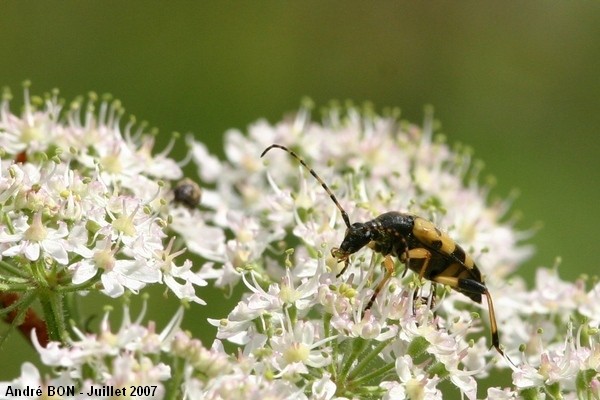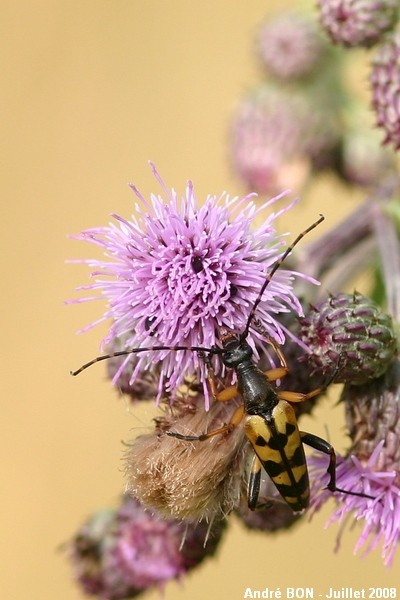


| Spotted Longhorn (Rutpela maculata (Poda, 1761)) |



|
|
Scientific name: Rutpela maculata (Poda, 1761) Common name: Spotted Longhorn Other names: Other scientific names: Leptura maculata, Strangalia maculata. French name: Strangalie tachetée, Lepture tachetée Order: Coleoptera Family: Cerambycidae Wingspan : 15 to 18mm for the body, the antennae can reach one half of the body size. Biotope: Woodland edges, clearings. Geographic area: Europe, Asia Minor, Syria, Iran. Observation period : May to August. The Imago only lives during 2 or 3 weeks. |
The Spotted Longhorn has a thin body, very thin at the tip of the abdomen The head and the pronotum are black. The antennae is ringed black and yellow. This is a distinctive key among other Strangalia species. The elytra are yellow with black marks. These marks have a longitudinal symmetry and may vary from one longhorn to another. The black marks usually form 4 stripes which may reduce to spots or even disappear. The legs are yellow with some black marks. The males' hind tibias bear tooth-shaped outgrowths which are not present on females. Imagos feed on pollen and nectar on Bramble flowers or Umbelliferae flowers. Larvae grow in rotten wood, mainly in stumps or trunks of dead deciduous trees. |
| [To know more about the Spotted Longhorn] [Next picture] [Top] |

|
Many insects are used to gathering nectar on umbelliferae flowers near the woodland edge. I can often observe the Spotted Longhorn. |
| [To know more about the Spotted Longhorn] [Next picture] [Previous picture] [Top] |

|
The approach is usually very easy. That's often the wind which makes it a little difficult to shoot the picture. |
| [To know more about the Spotted Longhorn] [Previous picture] [Top] |

|
Years go by but insect species remain the same. |